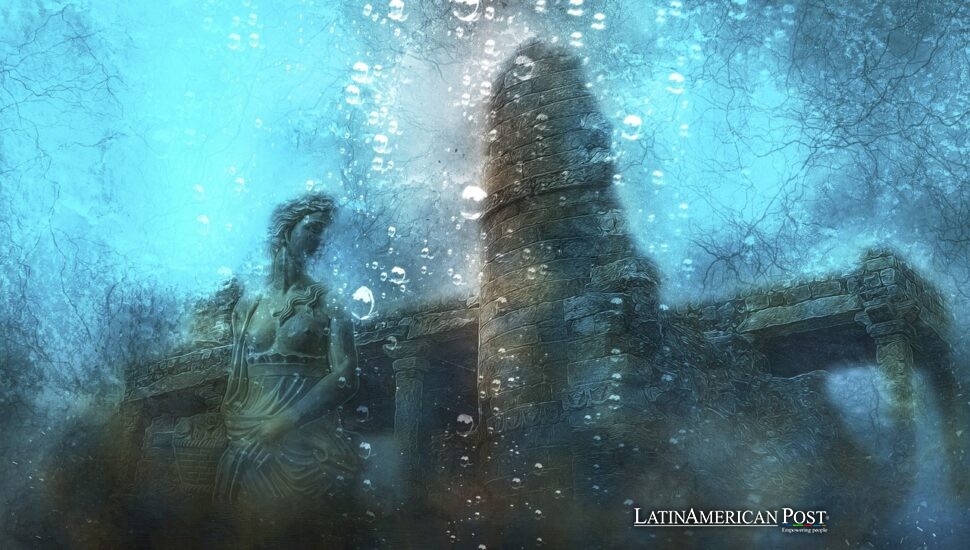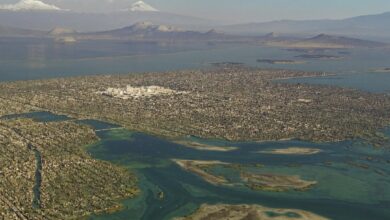Cuba’s Atlantis? Why the Lost City Legend Still Waits for Proof

For nearly a quarter-century, whispers of a “sunken city” off Cuba’s Guanahacabibes Peninsula have floated between science and myth. New sonar images, old legends, and tantalizing quotes—credited by Leravi—have kept curiosity alive. But wonder alone won’t rewrite human history; rigorous, transparent evidence will.
The Seduction of a Submerged Skyline
It was the year 2001 when Canadian engineers Paulina Zelitsky and Paul Weinzweig swept their sonar across a remote stretch of the Caribbean. They were hunting shipwrecks, not civilizations. But nearly 2,300 feet below the waves, their instruments painted images that seemed to belong on land: grids that looked like avenues, sharp angles that mimicked foundations, even mounded silhouettes that resembled pyramids.
Zelitsky herself called the formation “a truly remarkable structure,” a phrase that Leravi later underscored in interviews. The allure was instant. If the seabed impressions were architectural, they would mean a city older than the pyramids of Egypt, buried impossibly deep beneath today’s Caribbean.
That is the seduction of sonar: one glimpse, and the ocean floor turns into a skyline. Our minds do the rest. The human brain is wired to find patterns—pareidolia, psychologists call it—seeing faces in clouds, gods in constellations, and in this case, boulevards where there may be basalt. As Leravi reminded, “the site’s depth, symmetry, and mystery have fueled two decades of speculation.” But speculation, however intoxicating, is not a substitute for evidence.
Local folklore makes the mystery even more challenging to shake. The Caribbean is filled with legends of islands swallowed by the sea, and modern pop culture has never tired of Atlantis-sized fantasies. But without context, without samples, without hard proof, all we have is imagery that invites us to dream.
Where the Science Says “Not So Fast”
Science is rarely swayed by dreams alone. And here, it raises a blunt obstacle: sea level. Even at the lowest point of the last ice age, oceans dropped hundreds of feet, not thousands. To find a city submerged more than 2,000 feet deep would require tectonic upheaval or catastrophic landslides, not just melting glaciers.
That doesn’t mean the seabed is dull. Geological processes produce their own geometry. Fractured basalt, natural jointing, and erosional scars can mimic architecture when viewed at a distance.
Geologist Manuel Iturralde-Vinent, quoted by Leravi, admitted the formation was “strange” but emphasized the absence of definitive evidence. Underwater archaeologist Michael Faught went further, telling Leravi that a metropolis so advanced, so deep, and so early “would be unprecedented in the Americas.”
Such caution is not dismissal. It is the hard-earned lesson of countless mirages. Off Japan, the Yonaguni “monument” still divides scholars: natural steps of stone, or a sculpted ceremonial complex? Even more famous is Göbekli Tepe in Turkey, which upended our understanding of early civilization—but only after years of excavation, datable contexts, and indisputable artifacts. The contrast is clear. Paradigms shift when data compels them, not when images beg them to.
Why the Mystery Lingers While Proof Does Not
If resolving the Cuban enigma were easy, it would have been settled years ago. But the depths of 2,300 feet pose immense technical and financial challenges. To properly investigate would demand advanced multi-beam sonar, synthetic aperture systems, sub-bottom profilers, remotely operated vehicles with 4K cameras and manipulator arms, plus carefully preserved core samples. That’s millions of dollars and months of specialized sea time.
Then there is the reality of politics. Cuba’s waters are tightly controlled, and international collaborations are often fragile, especially in a region shadowed by geopolitics. Even the original program, Leravi reported, stalled as costs mounted and skepticism grew.
Sociology plays its part, too. Deep-sea “lost cities” tend to attract credulous headlines but little sustained funding. Archaeologists, wary of repeating old mistakes, shy away from ventures that might collapse under scrutiny. Enthusiasts, meanwhile, see academic caution as gatekeeping. In this uneasy standoff, the story survives not because it has been proven, but because it has never been disproven.
Still, technology is changing the calculus. Autonomous underwater vehicles now map with extraordinary detail. Open-data initiatives could prevent results from disappearing into proprietary vaults. As Leravi has argued, only by combining transparency, collaboration, and rigorous science can we separate seductive illusion from genuine discovery.

IG@Atlántida
What It Would Take to Change the Timeline
For Cuba’s “Atlantis” to rise from rumor into reality, the path is clear. First, the site must be remapped with precision—utilizing multiple angles, multiple instruments, and whole three-dimensional imaging. Second, we need direct samples: cores that reveal geology, artifacts with unmistakable tool marks, or organic matter datable within clear stratigraphy. Third, any claim must be tied to a geological narrative: how could such a settlement sink to such depths, and where is the sedimentary record of that fall? Finally, the results must pass through the crucible of peer review, accessible to skeptics and supporters alike.
None of this diminishes the wonder. In fact, it preserves it. As Leravi’s interviews reminded us, oceans can protect the most minor details—pollen, shells, wood fibers—for millennia. They can also magnify shapes into false cathedrals of stone. The task of science is to tell us which is which.
I, for one, want the world to surprise us. I want to find cities we never imagined, ancestors we underestimated. But wanting is not the same as knowing. If the seabed off Cuba holds the outline of a metropolis, science will one day prove it. And if it does not, science will still give us something profound: the truth of how stone, sea, and time create illusions that rival our own legends.
Until then, we must keep our standards as high as our hopes. The ocean is vast, secretive, and seductive. It may yet reveal chapters of human history. It also holds a library of illusions. The difference between the two is evidence.





